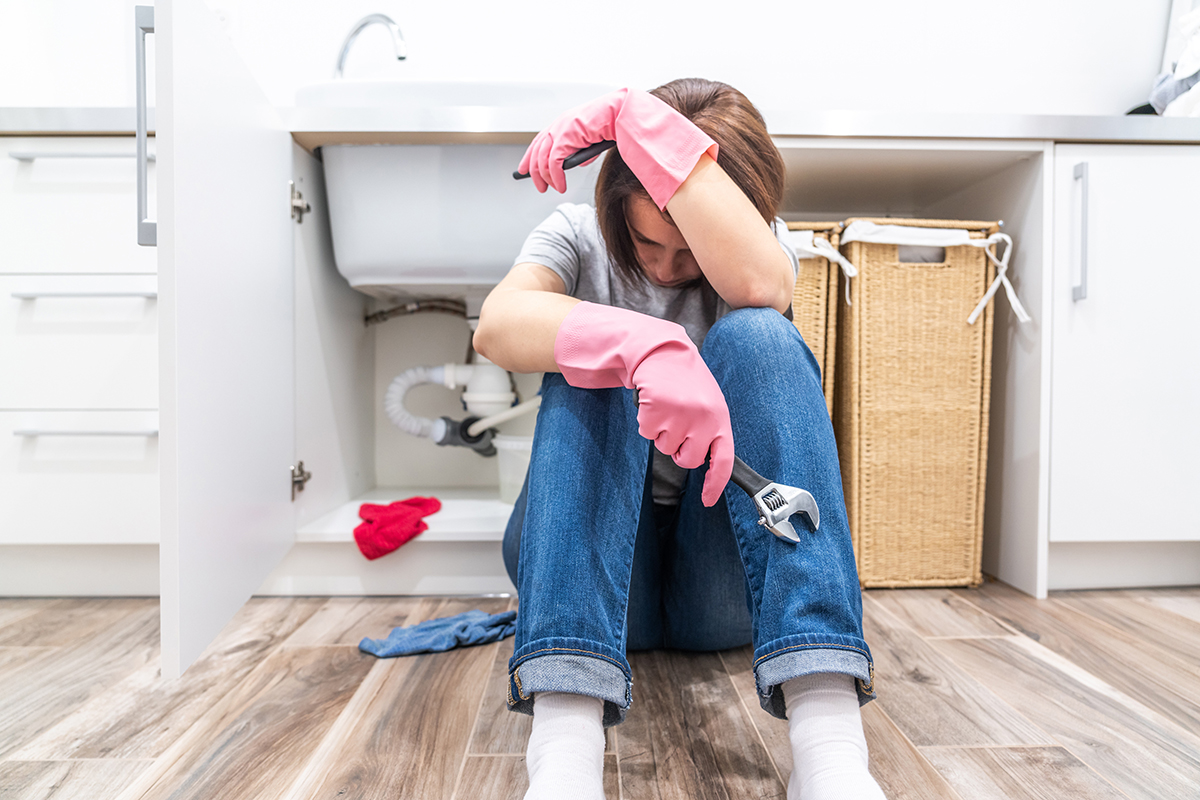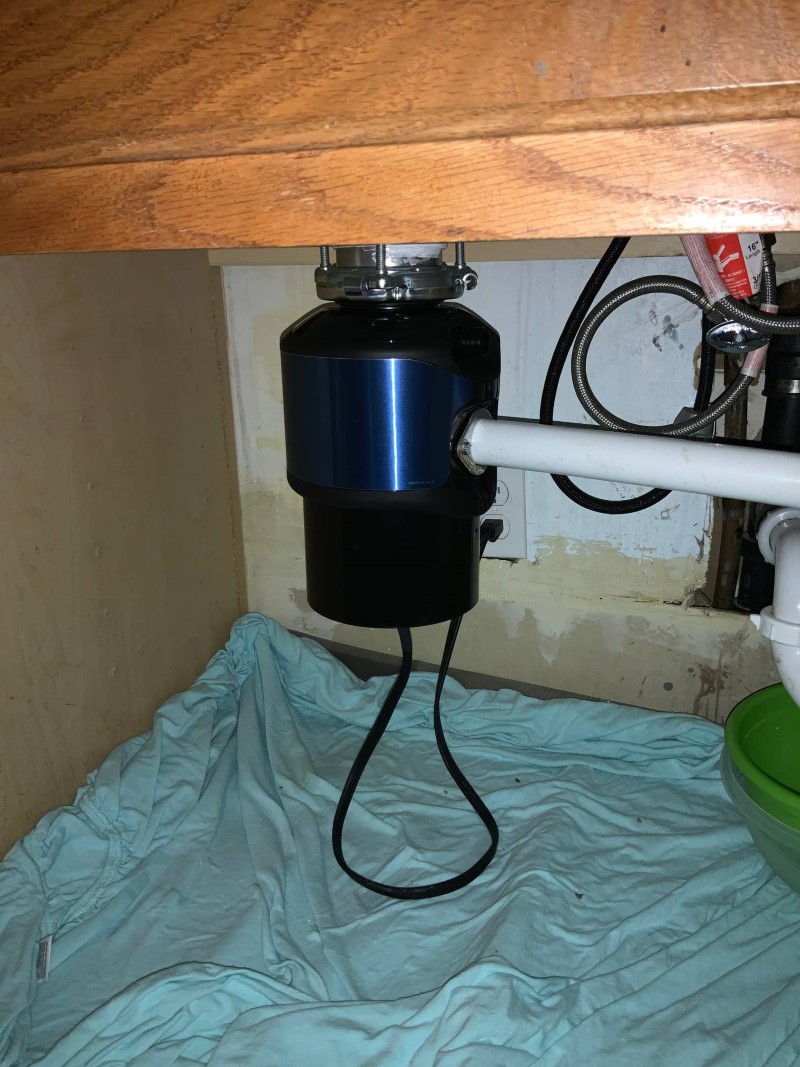Straightforward Techniques for Repairing a Leaky Garbage Disposal
Straightforward Techniques for Repairing a Leaky Garbage Disposal
Blog Article
This post following next in relation to Why Is is especially fascinating. You should take a peek.

Garbage disposals are necessary kitchen area home appliances that help in getting rid of food waste successfully. Nonetheless, a dripping waste disposal unit can be a discouraging and untidy trouble to take care of. Fortunately, many leaks can be fixed quickly with a few simple steps. In this write-up, we will review just how to take care of a dripping garbage disposal efficiently.
Intro
Waste disposal unit are mounted under kitchen sinks and are developed to shred food waste into smaller sized pieces, allowing it to travel through the plumbing system conveniently. While these devices are usually trusted, leakages can take place gradually due to deterioration, loosened connections, or damage to the unit.
Typical Causes of Leaks in Garbage Disposals
Worn Seals and Gaskets
Seals and gaskets play an essential function in preventing water from dripping out of the waste disposal unit. With time, these components can weaken, bring about leaks around the disposal unit.
Loose Links
The links in between the garbage disposal and the pipes system can become loosened gradually, causing water to leak out during procedure.
Fractures or Holes in the Disposal System
Physical damage to the garbage disposal, such as fractures or openings in the housing, can also result in leaks.
Recognizing the Resource of the Leakage
Prior to attempting to deal with a dripping garbage disposal, it is essential to determine the resource of the leak. This can normally be done via aesthetic evaluation or by carrying out simple examinations.
Visual Assessment
Evaluate the waste disposal unit device very carefully for any signs of water leak. Pay close attention to locations around seals, gaskets, and link factors.
Examining for Leaks
One means to test for leakages is by running water via the disposal unit and looking for any visible indicators of leakage.
Tools and Products Needed for Fixing a Leaking Garbage Disposal
Before starting the repair procedure, collect the essential devices and products, including a screwdriver, flexible wrench, plumbing professional's putty, substitute seals or gaskets, and epoxy or patching product for fixing cracks or holes.
Step-by-Step Overview to Taking Care Of a Dripping Garbage Disposal
Turn Off the Power
Prior to attempting any type of repair services, guarantee that the power to the garbage disposal system is shut off to avoid the threat of electric shock.
Find the Leakage
Determine the precise place of the leakage and establish the cause.
Tighten Connections
Use a wrench to tighten any loose links between the disposal device and the pipes system.
Replace Seals or Gaskets
If the leak results from used seals or gaskets, eliminate the old components and replace them with brand-new ones.
Patching Fractures or Holes
For fractures or holes in the disposal system, use epoxy or an ideal patching material to seal the damaged area.
Testing the Garbage Disposal After Fixing
When the repair work is full, check the garbage disposal by running water with it to make sure that the leak has been fixed.
Preventive Upkeep Tips to Prevent Future Leakages
To stop future leakages, it is necessary to execute normal maintenance on your garbage disposal. This includes maintaining it tidy, preventing placing non-food items or difficult items down the disposal, and occasionally checking for leaks or other concerns.
Conclusion
Finally, dealing with a dripping waste disposal unit is a fairly simple process that can be finished with fundamental devices and materials. By complying with the steps laid out in this post and practicing preventative upkeep, you can keep your waste disposal unit in good working problem and prevent expensive repair work in the future.
What to Do About a Leaking Garbage Disposal
A leaking garbage disposal often goes unnoticed until you confront a sopping cabinet, a foul-smelling puddle, or an audible drip-drip-drip from the unit. The fix can be frustrating, too, because the leak can stem from a number of components in the system. Fortunately, with a little sleuthing, you can zero in on the leak and—depending on the exact location—stop the icky oozing and repair the component that caused it. Worst case scenario, if it turns out that the garbage disposal must be replaced, installing a new one is a reasonable do-it-yourself task for those with basic plumbing skills. Read on to keep the cash you’d otherwise hand over to a pro.
Prepare to find the leak
Prior to testing the garbage disposal for leaks, unplug it at the wall outlet and turn off the power from the breaker box to prevent electrical shock. Then insert a watertight sink stopper into your sink drain and wipe the unit dry with a clean cloth. In any handy container, mix a few drops of food coloring into a few cups of water, and pour the dyed water onto the sink stopper to help you locate the leak.
Investigate the source
the top, where the disposal meets the sink drain the side, where the dishwasher hose or main drain pipe connects to the disposal or the bottom of the unit Inspect each of these locations while gliding a light-colored rag over the unit; the dyed water will readily show on the rag and reveal the location of the leak. If a leak isn’t immediately apparent, remove the sink stopper and pour a few more cups of dyed water down the sink drain, then check for leaks again. Leaks near the top of the unit are more likely to show themselves while the sink is plugged, while side and bottom leaks are more noticeable while the sink is unplugged.
The metal sink flange that sits directly inside the sink drain is typically sealed around the top with plumber’s putty (a clay-like sealant) and then secured from under the sink with bolts. If the plumber’s putty deteriorates, or the bolts loosen, the flange can no longer form a watertight seal between the sink drain and the disposal—which could cause a leak at the top of the unit.
To reseal the leaky flange, you must first detach the garbage disposal. Start by loosening the screws securing the main drain pipe to the disposal, then loosen the screws in the metal clamp securing the dishwasher hose to the disposal and detach the drain pipe and dishwasher hose from the disposal. Loosen the screws in the mounting ring that connects the disposal to the metal mounting assembly beneath the sink, then pull down the disposal and carefully set it on a clean, dry surface. Loosen the bolts in the mounting assembly with a wrench, then pull down the mounting assembly and set it near the disposal.

We hope you liked our piece about Why Is . Thanks so much for spending some time to read through our blog post. Are you aware of another person who is interested by the niche? Why not share it. I am grateful for your time. Kindly come by our website back soon.
Call Report this page